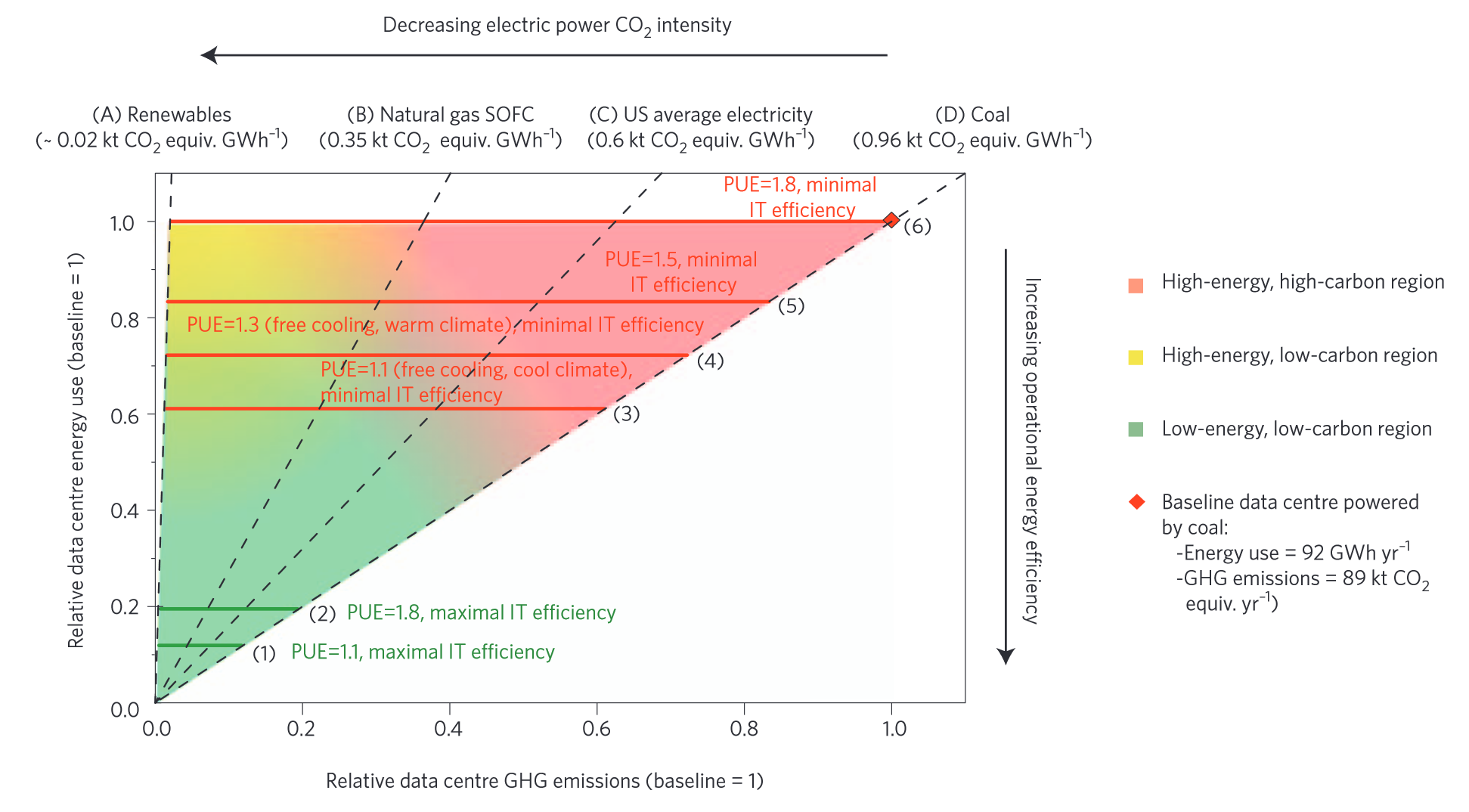Characteristics of low-carbon data centres
Status:: 🟩
Links:: Low-Carbon Data Centers
Metadata
Type:: #zotero/journalArticle
Authors:: Masanet, Eric; Shehabi, Arman; Koomey, Jonathan
Title:: Characteristics of low-carbon data centres
Publication Title:: "Nature Climate Change"
Date:: 2013
URL:: https://www.nature.com/articles/nclimate1786
Bibliography
Masanet, E., Shehabi, A., & Koomey, J. (2013). Characteristics of low-carbon data centres. Nature Climate Change, 3(7), Article 7. https://doi.org/10.1038/nclimate1786
Zotero
Zotero Tags:: #zotero/data_center_efficiency
Links:
Abstract
Increased use of IT services can contribute to reducing carbon emissions, given the improvements in efficiency of IT devices and data-centre operations. However, credible metrics to reward the data centres for minimizing carbon emissions are still lacking. This Perspective identifies the characteristics of low-carbon data centres and the factors that govern carbon performance.
Notes & Annotations
📑 Annotations (imported on 2023-04-04#18:26:19)
Figure 2 depicts the feasible performance range for our prototypical US data centre. The baseline point (6D) assumes typical energy efficiency (see Fig. 1) coupled with carbon-intensive coalfired electricity. Using the model in ref. 6, we populated the map with five additional energy-use levels, which are based on plausible variations in US data centre location, IT-device efficiency and PUE.
Fig. 2 shows that improved PUE and reduced electrical carbon intensity account for only small improvements when applied to the maximal IT-efficiency case. These results indicate that characteristics implying IT-device efficiency including the presence of efficient-rated devices, high-capacity utilization, IT power management and virtualization — are probably the best proxy metrics for low-carbon data centres in the near term
Low-carbon electricity without low-energy operations is suboptimal because, given their high energy intensity, data centres now using renewable power almost exclusively draw from centralized and resource-constrained supplies (notably hydropower, wind, geothermal and biogas).
Figure 2 also suggests that PUE — despite its status as the de facto data centre energy-efficiency metric — is by itself a suboptimal proxy for both absolute energy and carbon performance.
Our results and previous analyses suggest that IT-device efficiency is the most important characteristic to be reinforced through lowcarbon data centre incentives5,6,44–45. Although renewable energy can significantly reduce a data centre’s carbon emissions, an inefficient (that is, high-energy) data centre will use far more low-carbon electricity than is technically required.
New data centres should locate in areas with ample free cooling and/or low-carbon electricity grids to further push operations towards better energy and carbon performance.
In new or existing facilities where optimal IT-device efficiency is not feasible, significant reductions in PUE critically rise in importance as a policy aim (but still result in higher energy-use levels than efficient IT devices would deliver).
